Why Tri-Mode Connectivity is a Game-Changer for Keyboards
The Rise of Tri-Mode Mechanical Keyboards: Freedom and Flexibility
For years, mechanical keyboard enthusiasts were often tethered to their desks by a USB cable. While offering a stable and reliable connection, this setup limited mobility. Then came Bluetooth, offering a taste of wireless freedom. But Bluetooth had its drawbacks, including potential latency and pairing issues. Now, the future is here: tri-mode mechanical keyboards. These keyboards offer the best of all worlds: wired, Bluetooth, and 2.4GHz wireless connectivity. This guide will explore why tri-mode is a game-changer, highlighting the benefits and showcasing some excellent examples.
Understanding Tri-Mode Connectivity
Tri-mode keyboards offer three distinct ways to connect to your devices:
- Wired: This is the traditional method, offering a stable, lag-free connection ideal for gaming and professional use. It also provides the fastest data transfer rates and charges the keyboard.
- Bluetooth: Allows you to connect wirelessly to multiple devices, such as laptops, tablets, and smartphones. Bluetooth is perfect for on-the-go use and easy switching between devices. Keep in mind that Bluetooth can sometimes have a slight delay, especially in more crowded environments.
- 2.4GHz Wireless: This uses a dedicated dongle that plugs into your device. It offers a more stable and responsive wireless connection than Bluetooth, often with lower latency. It's a great option for gaming and everyday use where you need a reliable wireless experience.
Benefits of Tri-Mode Keyboards
Why should you consider a tri-mode mechanical keyboard? Here are the key advantages:
- Versatility: Use your keyboard with any device, anywhere. Switch seamlessly between your desktop, laptop, tablet, or phone.
- Flexibility: Choose the connection that best suits your needs. Wired for gaming, Bluetooth for mobile use, and 2.4GHz for a reliable wireless experience.
- Convenience: No more cables cluttering your desk unless you want them! Enjoy a clean, organized workspace.
- Future-Proofing: Tri-mode keyboards are designed to adapt to various setups and devices, ensuring longevity.
Top Tri-Mode Mechanical Keyboards to Consider
Let's dive into some of the best tri-mode mechanical keyboards available:
EPOMAKER EA75: A Versatile Performer
The EPOMAKER EA75 is a standout choice. This 75% keyboard packs a lot of features into a compact form factor. It boasts tri-mode connectivity (wired, Bluetooth, and 2.4GHz), making it adaptable to any setup. With its gasket-mounted design, factory-lubed switches, and multiple layers of sound dampening, the EA75 offers a smooth and quiet typing experience. Plus, the vibrant RGB lighting and hot-swappable compatibility add to its appeal.
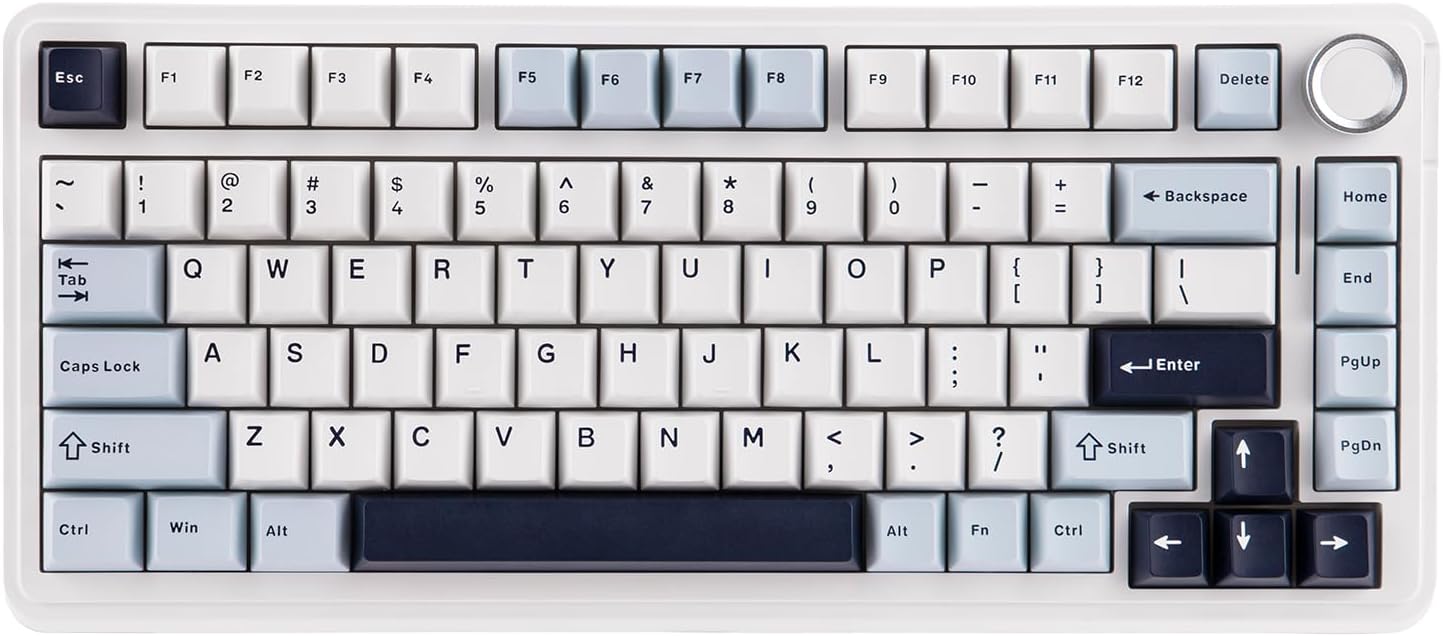
Pros:
- Tri-mode connectivity
- Excellent typing feel
- Hot-swappable switches
- RGB lighting
Cons:
- May not suit users who prefer a full-sized keyboard
Keychron K2 HE: For Gamers and Professionals
If you're looking for a high-performance keyboard, the Keychron K2 HE is a great option. This 75% keyboard features Hall-Effect Gateron double-rail magnetic switches, allowing for ultra-responsive input and customizable actuation. Its tri-mode connectivity (2.4GHz wireless, Bluetooth 5.2, and USB-C) offers flexibility, while QMK/VIA programmability and hot-swappability add to its versatility. Its aluminum and wood frame, gasket-mounted design, and long-lasting battery make it perfect for serious gaming and refined typing.
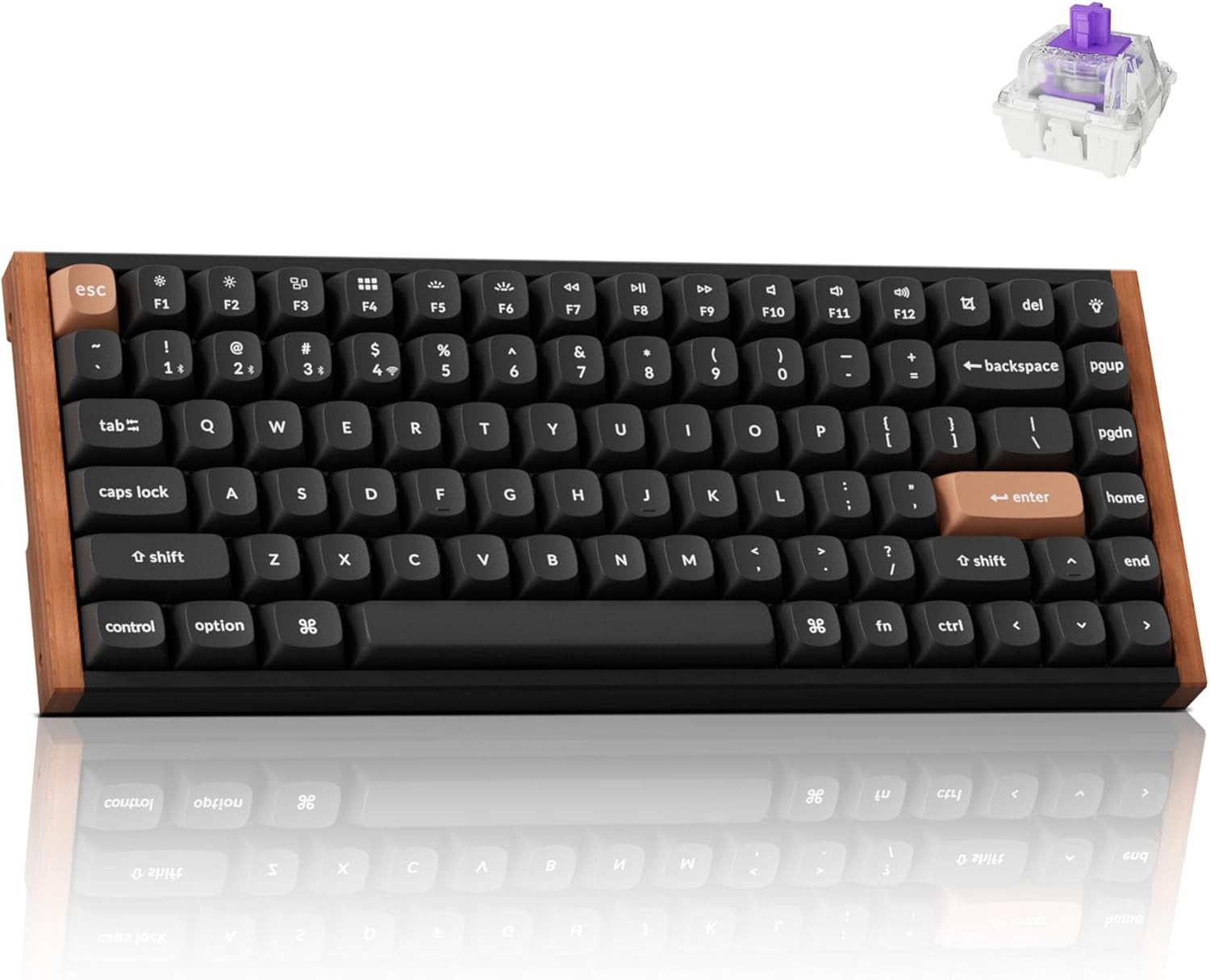
Pros:
- High-performance Hall-Effect switches
- Ultra-responsive input
- Tri-mode connectivity
- Durable build
Cons:
- Magnetic switches may not be for everyone
AULA F99: The Compact Powerhouse
The AULA F99 is a compact 96% mechanical keyboard that doesn't compromise on features. It offers tri-mode connectivity (Bluetooth 5.0, 2.4GHz wireless, and USB-C) paired with a powerful 8000mAh battery for extended use. Its gasket-mounted structure, five-layer sound dampening, and pre-lubed linear switches offer a soft, responsive typing experience with rich acoustics. With hot-swappable switch sockets and per-key RGB lighting, the AULA F99 is a versatile choice for both typists and gamers.
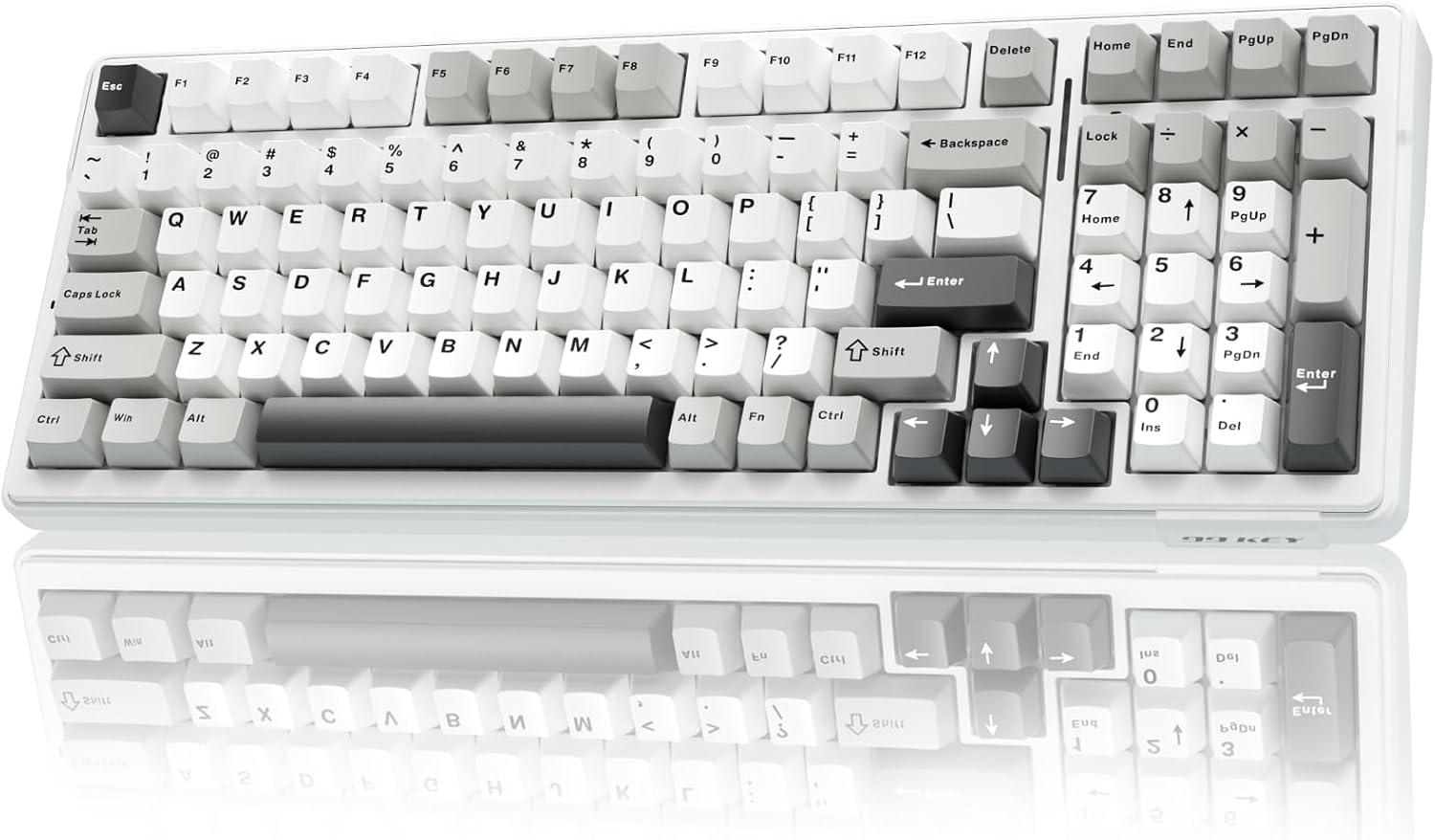
Pros:
- Compact size with numpad
- Long battery life
- Excellent sound dampening
- RGB lighting
Cons:
- 96% layout may take some getting used to.
Wobkey Rainy 75: Minimalist Elegance
For those seeking a minimalist aesthetic, the Wobkey Rainy75 is an excellent choice. This keyboard features a solid aluminum case, five-layer acoustic dampening, and a gasket-mounted design for soft, quiet keystrokes. It offers tri-mode connectivity (Bluetooth, 2.4GHz wireless, and USB-C wired), making it adaptable for any setup. The Rainy75 delivers a refined, customizable experience ideal for both work and play.
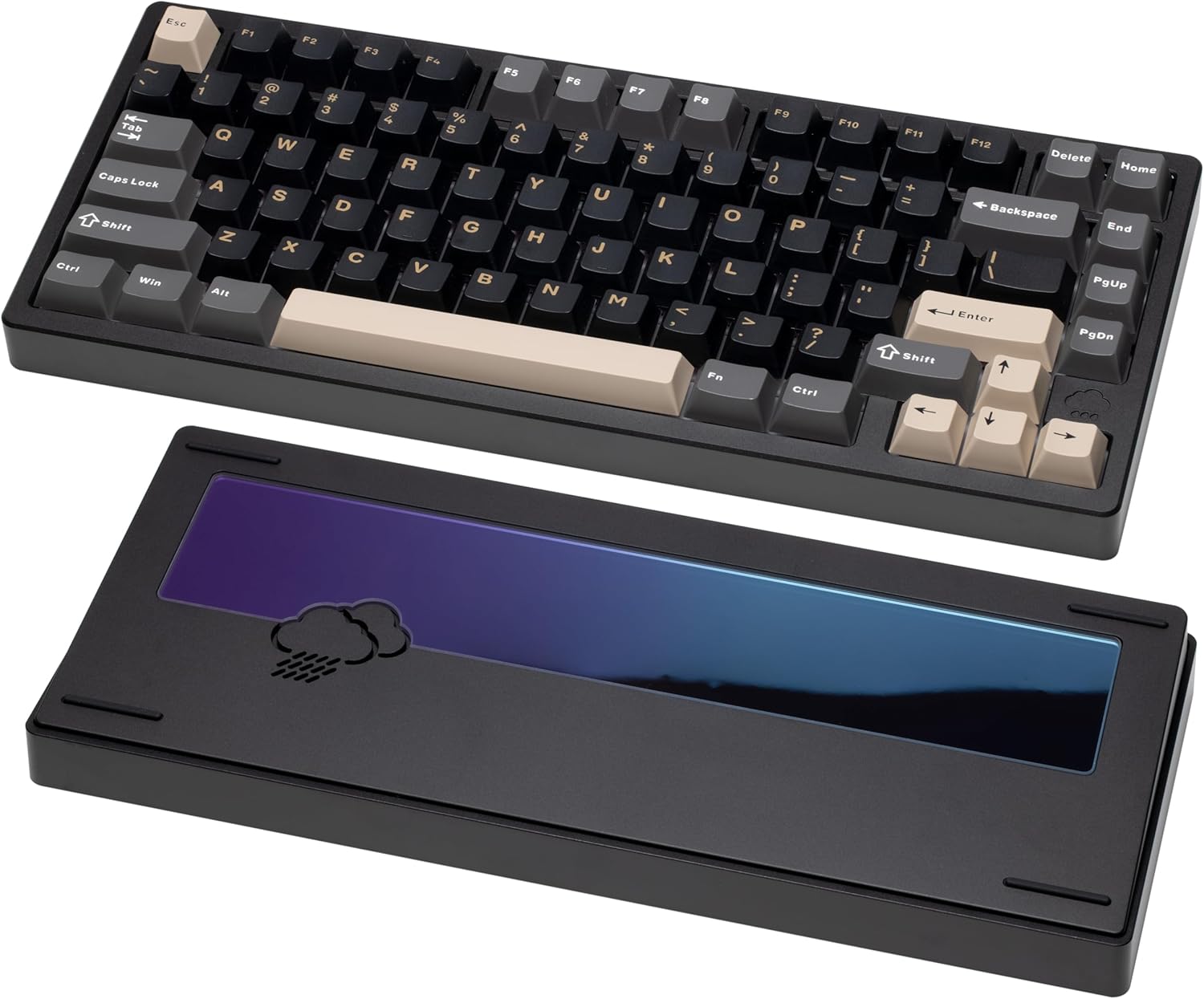
Pros:
- Premium build quality
- Quiet and smooth typing experience
- Tri-mode connectivity
- Sleek design
Cons:
- May be more expensive than other options
Akko 5075B Plus Air: Mac-Themed and Feature-Rich
If you're a Mac user, the Akko 5075B Plus Air is a fantastic option. This 75% keyboard is designed with a Mac-friendly layout, featuring hot-swappable sockets and durable PBT dye-sub keycaps. It supports tri-mode connectivity (Bluetooth 5.0, 2.4GHz, and USB-C) and includes a programmable RGB backlight. The customizable knob allows you to adjust brightness, volume, or other functions.
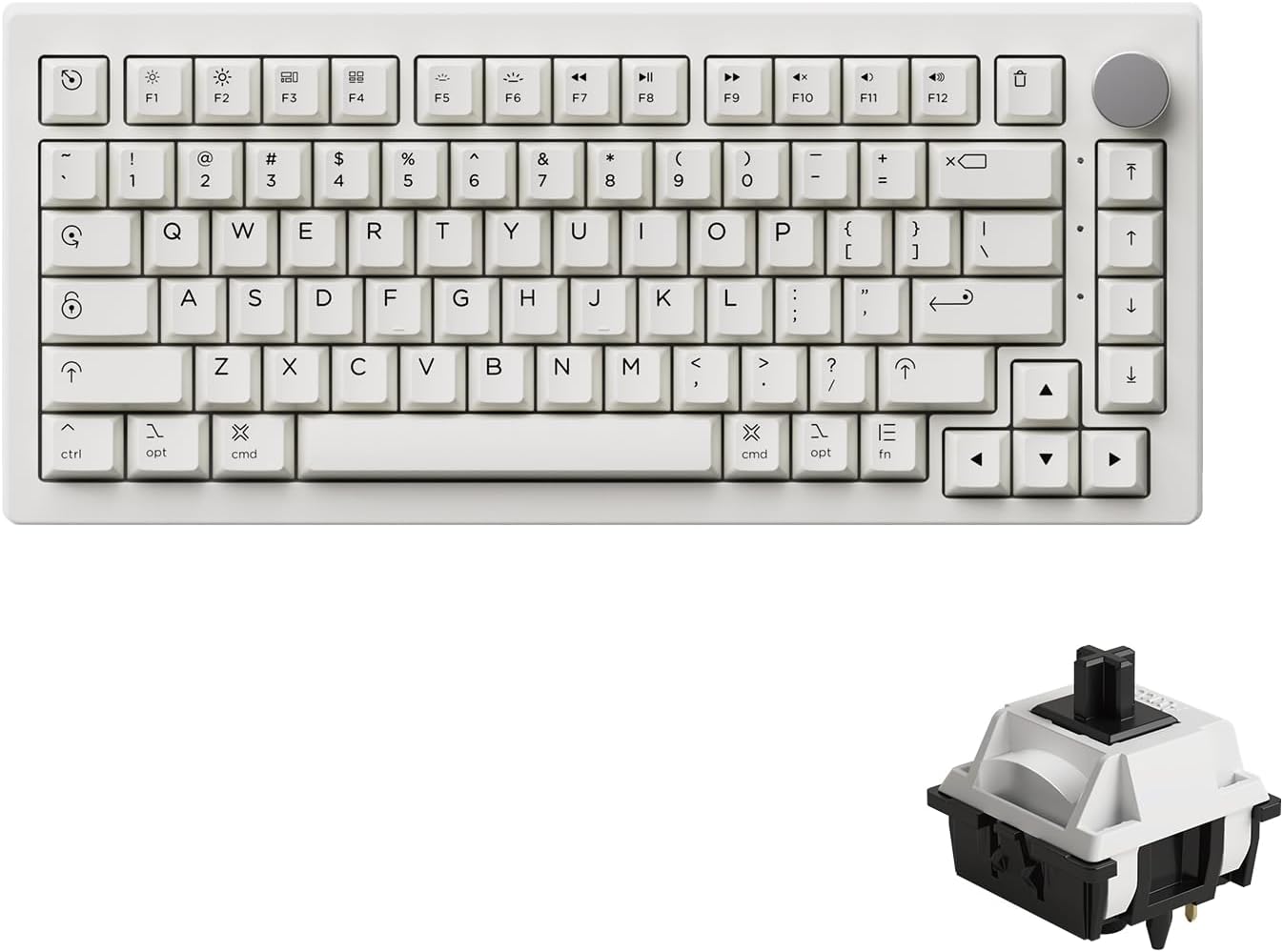
Pros:
- Mac-friendly layout
- Hot-swappable
- Customizable knob
- Stylish design
Cons:
- May not be ideal if you primarily use Windows
Choosing the Right Tri-Mode Keyboard for You
When selecting a tri-mode keyboard, consider these factors:
- Layout: Do you prefer a compact layout (60%, 75%) or a more traditional size (TKL, full-size)?
- Switches: What type of switches do you prefer (linear, tactile, clicky)? Consider hot-swappable options for easy customization.
- Connectivity: Ensure the keyboard supports the connectivity options you need (wired, Bluetooth, 2.4GHz).
- Features: Look for features like RGB lighting, programmable keys, and a volume knob, if desired.
- Build Quality: Consider the materials used (aluminum, plastic) and the overall build quality.
Tips for Using Tri-Mode Keyboards
- Pairing: Follow the keyboard's instructions for pairing via Bluetooth or using the 2.4GHz dongle.
- Switching Modes: Most keyboards have a dedicated switch or key combination to change between wired, Bluetooth, and 2.4GHz modes.
- Battery Life: For wireless use, consider the battery life and charging time. Many keyboards have a battery indicator.
- Latency: If gaming, test the latency of the wireless connections. Wired or 2.4GHz connections typically offer the lowest latency.
Conclusion: Embrace the Freedom of Tri-Mode
Tri-mode mechanical keyboards represent a significant advancement in keyboard technology, offering unparalleled flexibility and convenience. Whether you're a gamer, programmer, or general user, the ability to seamlessly switch between devices and connection types is a major advantage. Keyboards like the EPOMAKER EA75, Keychron K2 HE, AULA F99, Wobkey Rainy75, and Akko 5075B Plus Air provide excellent examples of the benefits of this technology. As you can see, there are many options available to suit your needs.
What are your thoughts on tri-mode keyboards? Let us know in the comments below! Do you have a favorite tri-mode keyboard? Share your experiences and suggestions.
Mechanical Keyboard Starter Guide
Ever wanted to learn about or build your own mechanical keyboard? This guide will show you everything you need to know.
Learn More